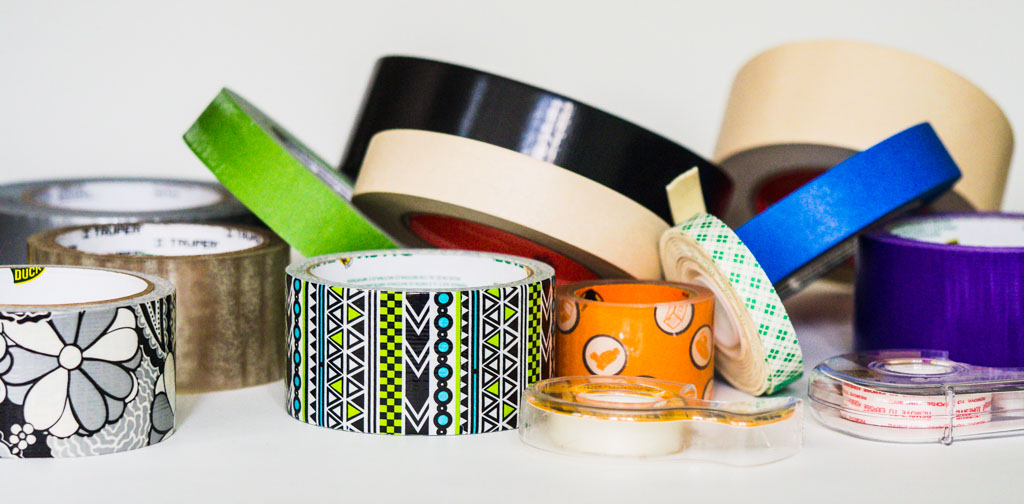Makerspace Resources
7 Types of Tape for your Makerspace

Tape is an easy and safe tool for people of all ages to use for building. It is great for quick prototyping, works on a variety of surfaces, and can be either temporary or permanent. Lots of finished projects utilize tape in some manner, as a way to adhere to things to each other, to cover a jagged edge of a part, or to decorate.
Here is a list of commonly used tapes.
Transparent adhesive tape (i.e. Scotch tape)
This all-purpose office tape is a good option for quick projects such as those that use copy paper or cardstock. It’s also good for basic prototyping.
Double sided sticky tape
This is a great alternative to glue, especially for younger kids. There are several versions out there, but the easiest to use comes on a dispenser just like Scotch tape. There are permanent and removable varieties so be sure to have the right variety to either place things for a little while, or to leave on long term.
Masking tape
This is a lower tack tape that is intended to be used for masking before surfaces for painting. It is also a great tool to use for labeling items. Masking tape can be used for longer-term bonds on paper and paper products, but it tends to get brittle with age. It’s nice for temporary holds on nonporous materials and it is a great it’s great to solution when you need to hold things in place to solder them. Keep in mind that if you leave masking tape on for several days, it tends to rip into pieces. Other versions of masking tape include Painter's blue tape and Frog tape.
Washi tape
Washi tape originates from Japan and is a decorative tape that comes in a variety of colors, patterns, and widths. Use it to for add designs to your finished products, and as a colorful way to hold light items together. It can also be used like other low-tack tapes to mask off areas or hold things in place temporarily. It is generally made of paper and is easily torn. Because it is relatively expensive, it is best used for crafting and art-based projects.
Duct tape
Almost anything can be stuck together using this strong and versatile adhesive tape. It can handle metal, wood, cardboard and card stock, fabric, glass, and most plastics. It is a great go-to tape for sticking bigger or bulkier objects to each other, repairing rips in fabric, and generally securing items that need a durable bond over time. it’s also a great tape for prototyping.
Other versions of duct tape include Gorilla tape and Duck tape. Gorilla tape is a thicker, stickier version of duct tape. Duck tape comes in a big variety of colors and patterns and is decorative alternative to duct tape for making wallets, vests, flowers, and other duct tape projects.
Clear packing tape
This is a great tape for all sorts of projects that involve cardboard or other paper products. When used on paper, it is permanent. It can also work as a temporary adhesive bond on nonporous materials like hard plastics, and it serves a tool to make a quick and cheap laminated surface.
Electrical Tape
In its professional life, it is used is to protect electric wires from accidentally touching and creating a short circuit and for insulating electric wires from excessive heat, which could start a fire. In the DIY craft and building world, it is a popular tool for creating decorative patterns on a variety of surfaces.
Tape in all forms is a useful adhesive that not only bonds materials together, but also creates tons of fun design and decorative options. If there are some of these that you haven’t tried in your makerspace, give them a shot. Maybe you will find your ne favorite makerspace tool!







